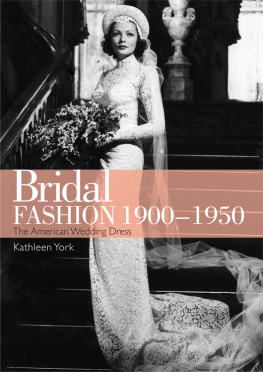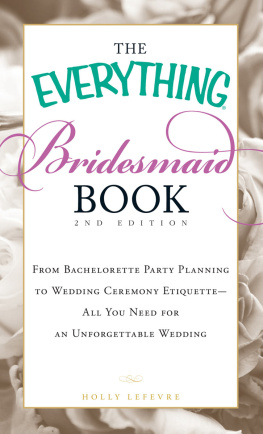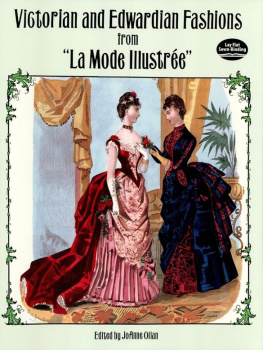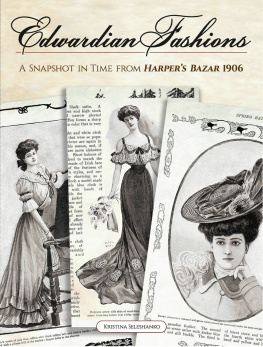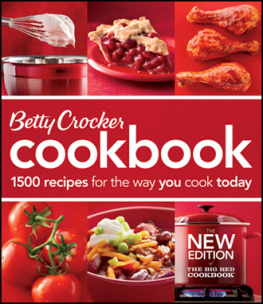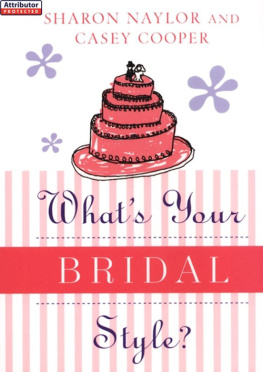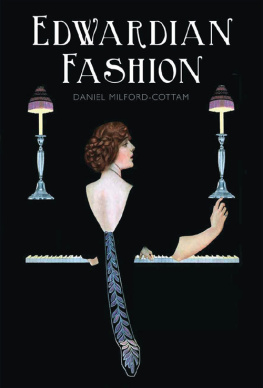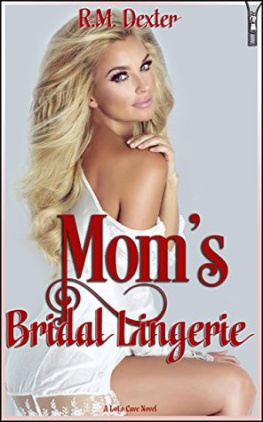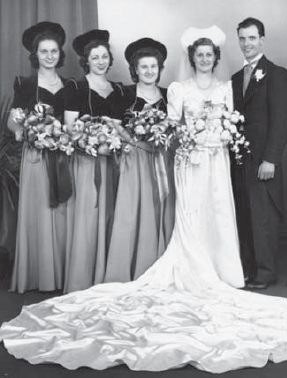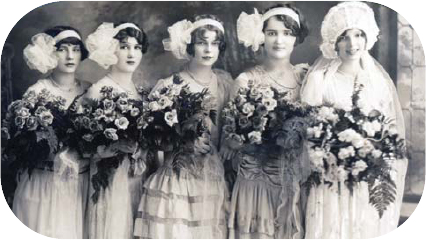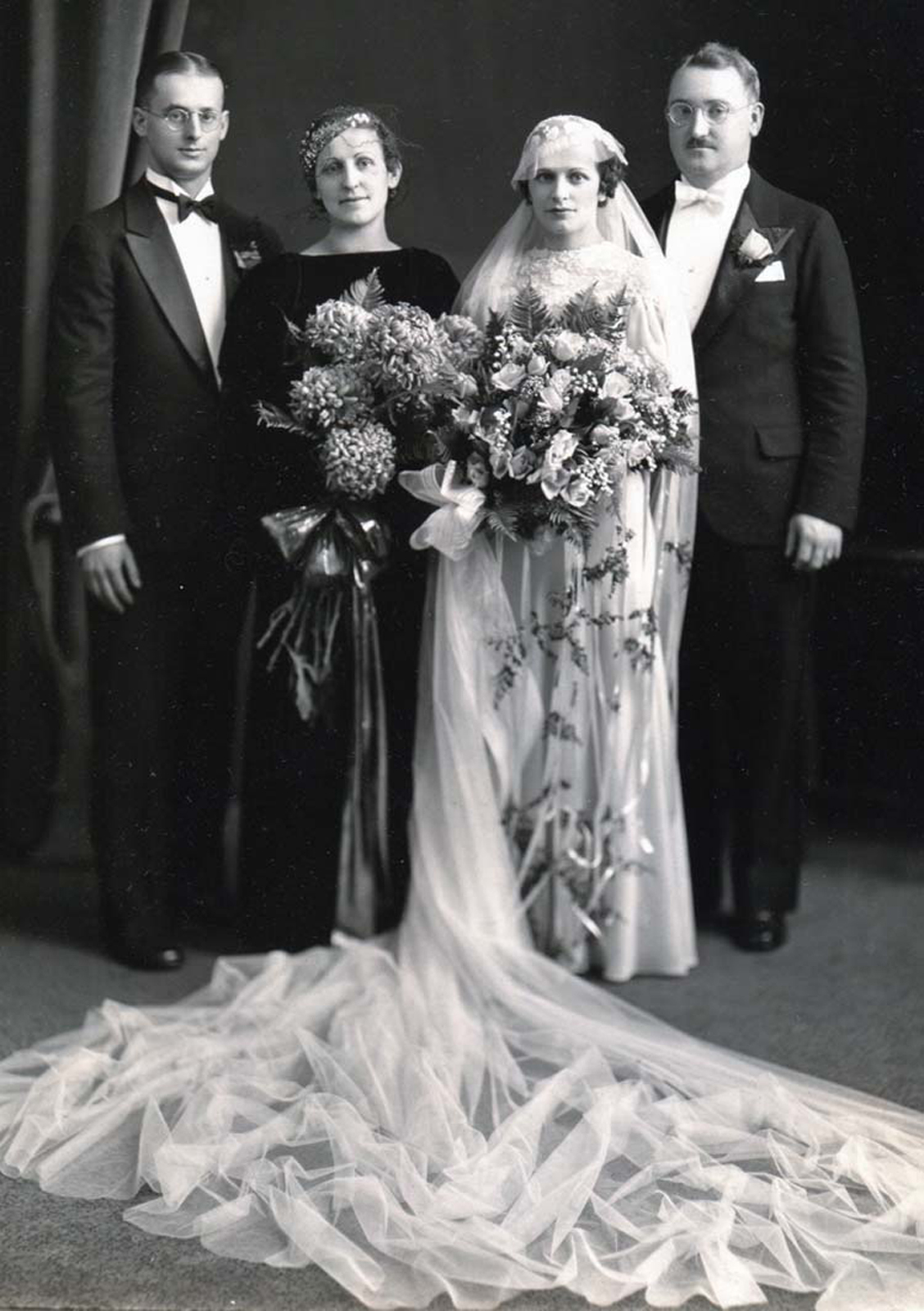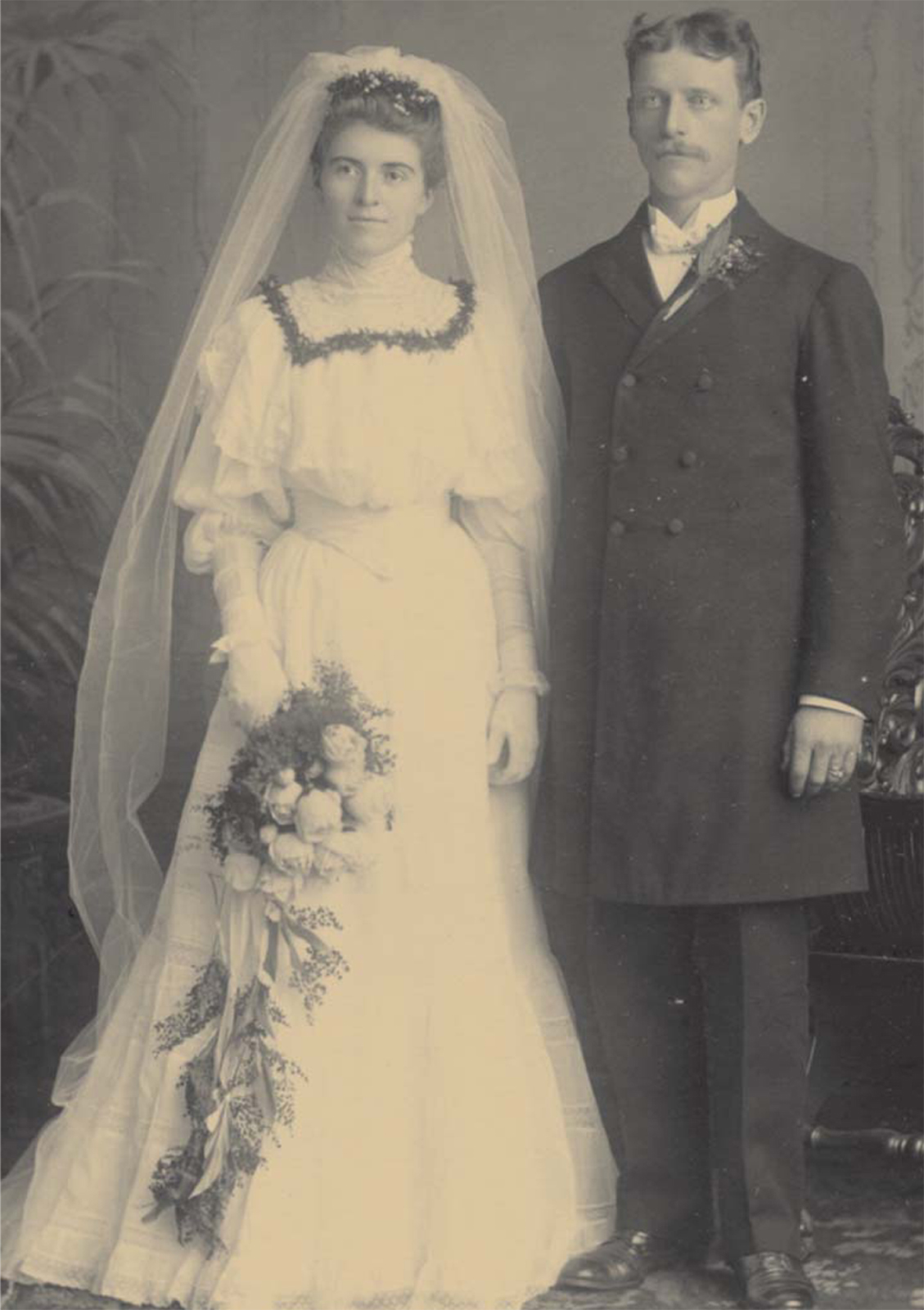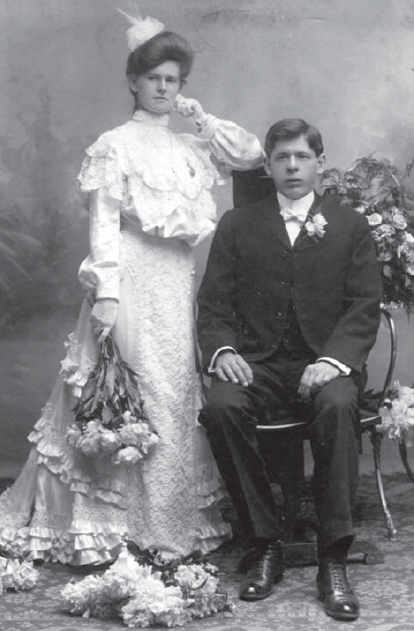BRIDAL FASHION 19001950
Kathleen York
This bride and her bridesmaids are wearing Hollywood-inspired headpieces of satin and velvet over wire frames.
SHIRE PUBLICATIONS
CONTENTS
From Harvey, Illinois, this bride and her bridesmaids are all wearing different dresses, which are fine examples of the styles that were popular in the 1920s.
Alice and Michael Krainz were married in Cleveland, Ohio, in November 1933. The brides headpiece is typical of the 1930s.
INTRODUCTION
F OR MILLENNIA , weddings have been important events, marking milestones in the lives of couples as they embark on new lives together. Weddings have changed greatly over the years, from simple, religious affairs with a few family members to dazzling galas for hundreds of guests for which some couples spend tens of thousands of dollars.
Weddings are big business. One of the most expensive and most critiqued items of the wedding day is the brides gown.
Here in the early 2010s, bridal fashions are a separate genre and do not reflect the way the average woman dresses. Today, brides want to look like a princess or sexy siren in dress styles called ball gown with a full skirt, or mermaid with a body-hugging top and flared skirt starting at the knees.
This was not always the way. In the past, bridal fashions reflected the style of dress worn daily. While today, many brides favor elaborate gowns with beading, lace, and bling, dresses of the early twentieth century tended to be simpler. Still important, however, were the accessories: headpieces, gloves, shoes, and flowers.
Photos and other memorabilia can help us correctly determine bridal fashion trends. By studying the styles of womens clothing, we can approximately date a bridal picture. One image or one artifact, however, does not a trend make. But discovering, for example, a large, flamboyant 1920s headpiece and then finding another similar or matching design may well prove a trend rather than present evidence of something unique or custom made.
Of course, trends pass. Fads come and go. Economics, popular culture, and even politics can shape fashion trends. But regardless of trends, brides have long loved their dresses, and in these pages we will look at the fashionsand trendsthat shaped bridal couture of the early twentieth century.
In bridal fashion, whats old is new again as ideas of the past are reinterpreted. Readers of these pages will find ideas for todays bridal gowns and headpieces while they examine the evolution of bridal fashions.
Bertha Panke and Henry Gauger pose on their wedding day in Chicago, c. 1907. The bride wears an unusual circular floral headpiece and floral greens on her dress.
19001910: THE AGE OF INNOCENCE AND EDWARDIAN FASHION
A T THE BEGINNING OF THE 1900s, the mood in America was one of optimism. The Industrial Revolution was in full swing, and America was rapidly changing from a country of mainly agriculture to one that was mostly industrial. The economy was booming, fueled by American manufacturing.
This decade became known as the Age of Optimism, the Age of Confidence, or the Age of Innocence. Americans had great pride and confidence in themselves and their country. And they had good reason. There was a surplus in the national treasury. Daily life was being made easier and more enjoyable through new inventions and technologies.
Electricity was just one of those inventions that were changing lives. Used in industry since the late 1800s, electricity started making inroads into daily life in the early twentieth century. Homes were being wired for electricity. Electric streetcars and railroads were replacing horse-drawn vehicles in larger cities. Automobiles, then called horseless carriages, were still considered a novelty. Autos were strictly for the rich because they were expensive to buy and keep running. While many American inventors were focusing on developing automobiles, some were looking to the skies. Wilbur and Orville Wright had their first, albeit brief, air flight in 1903. However, air flight was not given serious consideration. It was viewed as an interesting experiment, but nothing more.
This was called the Edwardian era, with mores and fashion harkening to the norms of England. Queen Victoria died in 1901, ending the Victorian era. She was succeeded by Edward VII, launching the Edwardian era. This was a time of formality between the sexes. Roles for men and women were very clearly spelled out by society. A man was expected to tip his hat to a lady. A woman was expected to be chaperoned if she was with a man who was not her husband.
Edwardian fashions favored the mature woman, accenting a wasp-thin waistline, full bosom, and ample hips and behind. The corset was a garment no woman would have considered going without. At the beginning of this decade, the corset was called the S corset because it forced a womans body into a very unnatural S-shaped posture. The bosom was thrust forward, and the hips were thrust back.
The most recognizable characteristics of Edwardian dresses are long, flowing skirts that draped gracefully over the hips, with the fullness at the back, and ended at a ruffle or small train. Skirts were worn to the floor; seeing a ladys ankles was considered improper. The bodice characteristically had a high neckline, fullness at the front, and a waistline that dropped forward at the front. The puff at the front of the bodice was often exaggerated with rows of ruffles or lace. Sleeves were often full and accented by lace ruffles, ending anywhere from the elbow to the wrist at a snug band or ruffle. Sometimes this snug band extended from the elbow to the wrist.
This bride wears a typical Edwardian-style wedding dress with its blousy front, high neckline, and flowing skirt.
A bride at this time was expected to create an image of modesty by being entirely covered up, from her high neckline to her gloves and all the way down to her ankles. Edwardian bridal dresses were made from chiffon over satin or thin cotton muslin over heavier cotton or silk. Lace or embroidered sheer fabrics were often used to create a lighter bodice top, while still maintaining propriety. Either worn alone or over another fabric, lace fabrics were very popular for bridal gowns. There were many underlying layers to the dresses to create the fashionable shape. Bodices often had boned linings, even though the outside look was blousy. Even the skirts had many underlying shaped petticoats, with ruffles on the bottom, to create the look.
Bridal gowns of the time were usually hand-sewn. At the beginning of the 1900s, the ready-to-wear industry was in its infancy. Before this time, a woman would have made all of her own clothes or hired a dressmaker to do it for her. The rich would have had the gown custom made. Brides on a budget had to make their own. Being able to walk into a store to buy a dress was progress.
Next page
